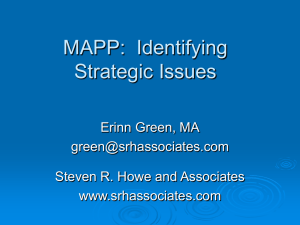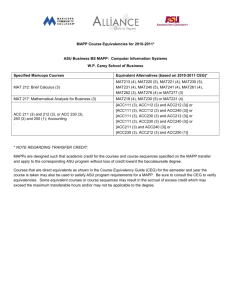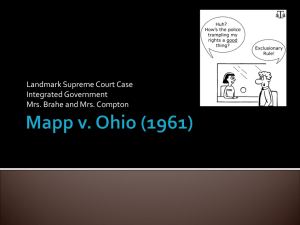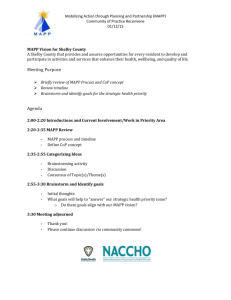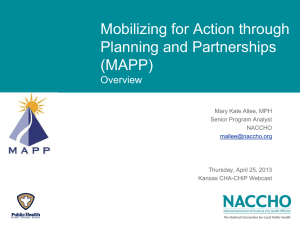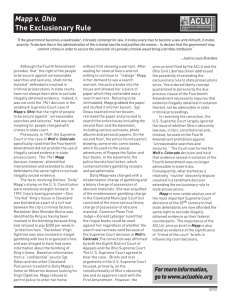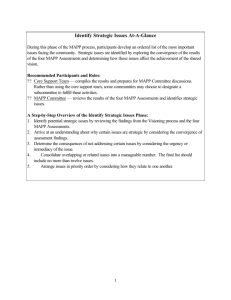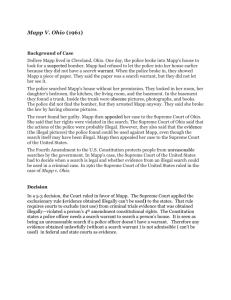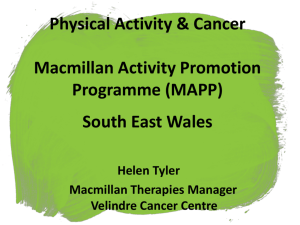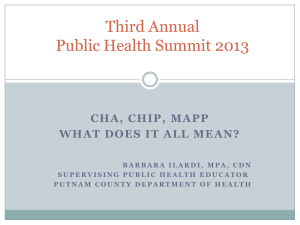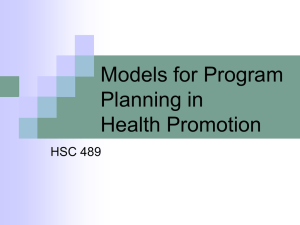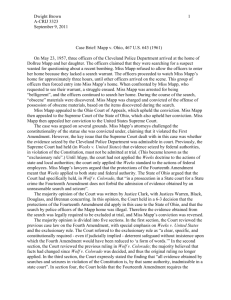Healthy Albany Park
advertisement
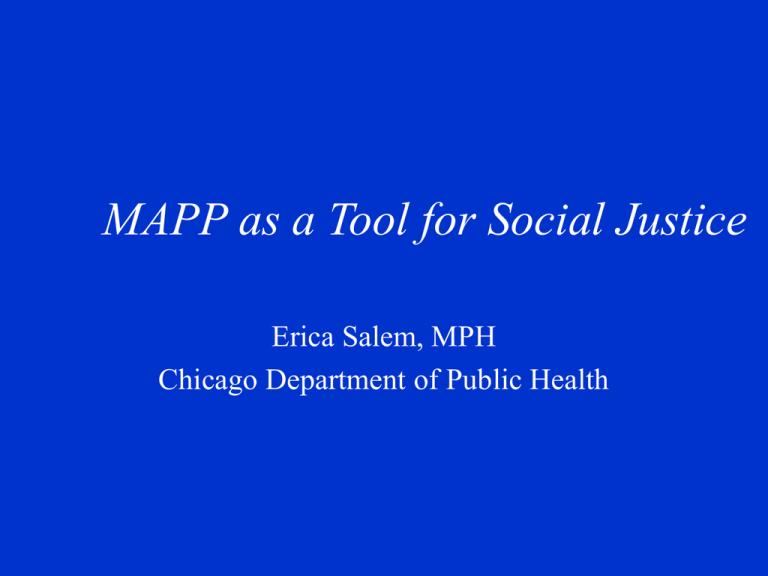
MAPP as a Tool for Social Justice Erica Salem, MPH Chicago Department of Public Health Outline • Overview of MAPP • Implementation in Chicago communities • Changes to public health practice in Chicago Mobilizing for Action through Planning and Partnerships • Community wide strategic planning tool for improving public health • Means for communities to prioritize public health issues, identify resources for addressing them, and take action Why MAPP? • Moves public health from program planning to strategic planning • Moves strategic planning from a single organization to a community MAPP Overview Phases of MAPP 1. Organize for Success/Partnership Developmt. - Identify participants - Readiness assessment 2. Vision Development - Community at its best Phases of MAPP 3. Four Assessments - Community Health Status - Community Themes and Strengths - Forces of Change - Local Public Health System Phases of MAPP 4. Identify Strategic Issues - predominant, cross-cutting findings 5. Formulate Goals & Strategies 6. Action Cycle - plan, implement, evaluate MAPP and Social Justice? MAPP is a tool for system change! • MAPP considers community opportunities not just deficits. • It changes the way we look at people. • It changes who does the looking. How we’re trained to see people YES - Inadequate housing Limited job skills Lacks job seeking skills Poor work history Fired from jobs or quit No recent work history Lack high school diploma/GED Lack training for career goal Age Unrealistic goals Single parent NO __ __ __ __ __ __ __ __ __ __ __ __ __ __ __ __ __ __ __ __ __ __ How MAPP Looks at People MAPP engages communities as active partners or co-producers of good health. Chicago Center for Community Partnerships • Organizational division of CDPH • Support coalitions in development and implementation of community health improvement plans. Albany Park # Hermosa # # Austin North Lawndale South Lawndale Chicago Lawn # # South Chicago c:\je s sic a _ 10 - 1 4 -0 3 .a p r vie w 1 /la yo u t 1 4 /8/0 4 Key elements of approach • Community led process within structured framework (MAPP) • Community-driven data collection • Technical assistance provided by LPHA • Identification of appropriate citywide/community roles Role of Community Coalition Coordinator From the community Collaboration engineer Does day-to-day work of coalition Coalition members Data collection and analysis Develop content of plan Drive implementation Role of Health Department • Technical planning support • Centralized administration • Opportunities for – Training – Fundraising How is Power Distributed? Power difference between people who help and people who are helped. The Old Health Department • Review existing data - Leading causes of death, CVD - Hospital discharge data - Focus groups • Develop interventions The Health Department Today • Department provide training & stipends to community residents • Community conducts block-by-block assessments • Community develops interventions • Department support community interventions Community-driven Intervention • Chamber of Commerce leads subgroup • Donation of produce to smaller stores to create market • Monthly tastings at larger grocery stores Does it Make a Difference? Old Results Possible in knowledge Behavior change unlikely given community barriers Community Results access to produce sales of - Cucumbers - Cactus - Kiwi +38% +44% +71% produce consumption What the Health Department Gives Up • Control • Unilateral Decision-making • Money What the Health Department Gains • More and better information about Chicago communities • Partners in community health improvement • Constituency for public health What Communities Gain • Greater capacity to understand and address public health and related needs • Greater credibility with decision makers • Influence on the allocation of public health resources • Improved health Beyond MAPP • Integrate principles into operations • Maximize new opportunities
